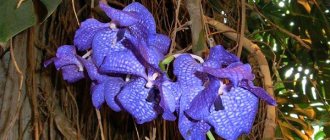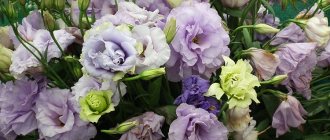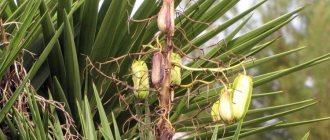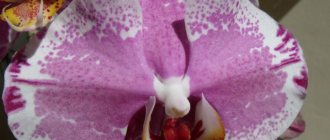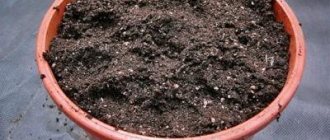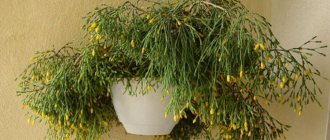Alpine forget-me-not and other species
Among the people, the flower is often also called “prigozhitsa” or “grolyanka”. It looks inconspicuous: bushes from 10 to 40 cm in height with highly branched stems and many sessile leaves crowned with small inflorescences-corymbs. The flowers of garden varieties are small (but much larger than wild ones), usually 5-7 mm in diameter, blue, pink or white with a bright yellow core, like the sun.
Flowering begins in the first third of summer and ends in July. Uncultivated species continue to open their buds until cold weather.
A representative of the Borachnikov family is grown as a one-, two-, or perennial. But by the end of the third season, the plant’s stems become excessively elongated and the number of flowers decreases. Plantings are rejuvenated by removing old ones and sowing a new generation.
Scientists count more than 50 species of forget-me-nots, growing in all corners of the Earth where there is a lot of moisture, sometimes in swamps. The most common among gardeners are:
- Alpine, living in the middle mountains of the Caucasus, in the Carpathians, Alps, Altai, and the south of the Urals. The height of the plant is about 15 cm, its petals are a rich dark blue color, and the leaves are light green. In bright light, flowering time is about 2 months. In the gardens of the lowland part of Russia, a specially bred garden variety is grown. Gardeners are popular with tall dark blue Music, 15-centimeter Indigo, dwarf pink Rosilva, and soft blue lush little Victoria.
- Swampy, grows wild along the edges of swamps and ponds. The species is distinguished by large flowers - up to 12 mm in diameter, and very long stems. The color of the corolla is blue or pink. The Thuringen variety is valued for its dark blue, almost blue flowers.
- Field, growing in almost all open places where the soil retains moisture for a long time. The stems are of medium height, the petals are small and blue.
- Forest, lover of shady thickets. A tall plant that blooms profusely with pink, blue or light blue flowers. The varieties Miro, Roggli, and Magnum series are popular.
- Arranged-flowered, native to Switzerland. Large corollas bloom profusely on 30-centimeter spreading stems. The Blau Grasmuk variety is common among domestic flower growers.
In the gardens there are also cultivated forms of fragrant forget-me-not, Sakhalin, Lazistan, pleasant and some other species.
Hybrid varieties are the results of the work of breeders. The color of the petals, depending on the variety, ranges from delicate to deep blue.
How forget-me-nots grow in the forest
In the natural conditions of a forest or forest-steppe, forget-me-nots are found where the soil is well moistened and there is shady protection above in the form of large trees.
Did you know? This plant can stand in a vase with water for about 25–30 days after it is cut. Sometimes it even “throws out” new flowers.
The flower feels great in the territorial zone of a river or some other body of water, in clearings where taller representatives of the flora create shade. The distribution area of the forget-me-not is quite wide. It is found in the forests of Europe, Asia, Australia and New Zealand.
Planting forget-me-nots
Most varieties of Prigozhits prefer slightly shaded areas, some prefer full shade. The exception is field and alpine varieties, which actively bloom only in well-lit areas.
Flowers do not make any serious demands on the soil: moderately fertile soil with good aeration, stagnation of water is undesirable. Forget-me-nots are planted in the garden in one of two ways: directly with seeds in a flowerbed or with seedlings.
Spring sowing of seeds in open ground
When the soil warms up well, it is loosened and peat or humus is added. After 2-3 weeks, they dig it up again and level it.
Small holes are prepared for sowing at a distance of 10 cm from each other. The sown seeds are covered with a thin layer of soil and covered with polyethylene on top. Shoots appear after 2 weeks. Seedlings are thinned out to provide them with comfortable growing conditions.
Autumn sowing for seedlings
Conducted at the very beginning of winter. Seedling boxes are filled with a substrate of one third of washed river sand and two thirds of disinfected turf soil. The seeds are scattered over the surface of the soil, lightly pressed, and lightly sprinkled with soil.
Then the crops are moistened through a spray bottle. The first shoots appear by the end of the first week. When the first 2-3 true leaves are formed, the seedlings are transplanted into separate cups and placed in an unheated greenhouse until spring. When the snow melts, the cups with seedlings are transferred to a moderately warm room. Seedlings are planted in flower beds in April. On most plants, buds are already forming by this time.
Care Tips
As you know, forest forget-me-nots bloom profusely only with a sufficient level of humidity. Therefore, he has been diligently monitored since the beginning of the season. In early spring, a lot of melt water remains in the soil, and it also rains periodically. Taking these factors into account, water the flowers only as the soil surface dries.
Many people believe that forget-me-nots do not need feeding. However, hybrid varieties respond well to some of them. Experts use substances that contain potassium and phosphorus. They are introduced at the beginning of the flowering season. Wintering bushes are fed again at the end of summer.
It is advisable to carefully cut off dried forget-me-not buds to maintain the flowerbed in perfect condition.
Conditions for growing forget-me-nots
Grolyanka is unpretentious and does not require special conditions. A sufficient amount of light and shade, moderate watering, rare fertilizing, measures to protect against pests and diseases do not take much time and are accessible to beginning gardeners.
Watering
Irrigation is required 2 times a week for flowers growing in open sunny areas and alpine hills. Inhabitants of shady corners are watered once a week, provided there is no natural precipitation.
To reduce hassle, forget-me-nots are usually planted in the company of garden plants that reliably shade the soil.
Feeding
On overly fertile soil, the plant begins to fatten - to increase only the leaf mass. Therefore, fertilizers must be handled with extreme caution. During the season, it is enough to add peat or humus twice - in spring and autumn, and immediately after flowering, water with liquid mineral complexes.
Other care activities
Experienced gardeners recommend loosening the soil regularly, at least once every 10-15 days, so that nutrients and oxygen can easily reach the roots.
The flowers do not need weeding - the powerful root system drowns out the weeds trying to get out of the ground.
There is no need to prepare flowers for winter. The roots tolerate severe frosts well even without snow cover. Sometimes gardeners simply mulch their plantings with a thin layer of dry leaves.
Formation of flower arrangements
Using forget-me-nots in landscape design, experts plant them in groups. Often higher cultures become the background for them.
In the spring they fit wonderfully into the company:
- daffodils;
- tulips;
- lilies of the valley;
- irises
Forget-me-nots are “friends” with ferns, hostas and Volzhanka, which also love dense shade. To decorate artificial ponds, flowers are planted as carpets. In alpine hills and rockeries, forget-me-nots occupy a worthy place. In summer, viola, calendula and marigolds can become their neighbors. Thanks to such imagination, flower beds saturated with bright colors will delight the eye before the onset of cold weather.
As you can see, even a novice gardener can cope with growing forget-me-nots. The main thing is to gradually put into practice the advice of experts. First, seedlings are grown. Then they transfer it to an open flowerbed and create a chic landscape design. Water as the soil dries, taking into account natural precipitation. Let the sky-blue “eyes” appear on our summer cottage.
Reproduction of forget-me-nots
All traditional methods are suitable for propagation: using seeds, cuttings, dividing the bush.
Seeds
Collected as they ripen. After drying, they are poured into a fabric bag and stored until sowing, but not more than 3 years. You can immediately sow fresh seeds in flower beds and flower beds. However, it should be remembered that hybrid forms of forget-me-nots do not transmit varietal characteristics if they are propagated in this way.
Sometimes summer residents don’t even bother collecting seeds - the plant grows well by self-sowing. In spring, young bushes are carefully dug up and planted in the right place.
Dividing the bush
The optimal way to increase the number of hybrid forms. The procedure can be carried out at any warm time of the year; the hardy root system tolerates division without damage and easily takes root in a new place.
The bushes are dug up and carefully divided into several parts. Each division is planted in a prepared hole.
Cuttings
Also used for propagation of hybrid and varietal highly decorative forget-me-nots. At the end of flowering, cut the apical shoots with a sharp, disinfected knife. Plant them immediately and cover them with polyethylene or transparent glass containers. Watering is carried out very carefully: water on the leaves is extremely harmful to cuttings. To make the bushes branch, they are pinched 1-2 cm.
With this method of propagation, blueberries bloom in the same year. But for the winter they need to be covered with spruce branches or agrofibre.
Description of the structure
The marsh forget-me-not reaches a height of about thirty centimeters. Its homeland is the territory of Western Europe. The perennial forget-me-not plant grows preferably in moist areas.
Forget-me-not features:
- Forget-me-not has slightly pubescent leaves reaching a length of up to five centimeters.
- The leaves are located quite close to each other on the stem and are stored until the first frost.
- Forget-me-not blooms quite early, in spring or in the first ten days of June.
- The small flowers have a beautiful blue tint, quite noticeable against the backdrop of awakening nature.
- Small forget-me-not flowers are not afraid of not yet warmed air and temperatures of no more than ten degrees.
Forget-me-not pests and diseases
Flowers are highly resistant to disease. The only cause of damage can be excessive watering.
Waterlogged soil is a favorable environment for the development of fungal infections - powdery mildew, root rot, gray rot. If signs of disease appear on the leaves and stems, treat with any fungicide (copper sulfate, HOM, Skor, Fitosporin and others).
To prevent an outbreak of infection, monitor planting density and thin out plants in a timely manner. Also avoid drying out the soil or prolonged stagnation of moisture under the flowers.
Pests also do not actively attack forget-me-nots, which makes caring for them much easier. Insecticides are used only when parasites are detected or in the event of a massive invasion of the area.
When to plant forget-me-not seedlings: optimal timing
The timing of sowing seeds for seedlings largely depends on when you want to see flowering! If you want to enjoy blooming forget-me-nots at the end of April or at the beginning of May, then you should sow them already at the end of October, in November. And if you want to see flowering in July-August, then you should sow at the standard time, approximately in March.
However, when planting early in October-November, it is necessary to constantly (in the morning and evening, and sometimes even during the day) illuminate the seedlings with phytolamps, otherwise the seedlings simply will not be able to grow and develop normally, they will stretch out and weaken.
When planting in spring, it is optimal to plant forget-me-not seedlings during March. The 2022 Lunar calendar will help you choose a specific sowing day
- Favorable days: in January: 1, 10, 11, 15, 16, 19, 20;
- in February: 7, 8, 12, 13, 14, 15;
- in March: 10, 11, 15, 20, 21, 24, 25.
- Unfavorable days: in January: 2, 18th;
- in February: 1, 16;
- in March: 2, 16, 17, 18, 31.
Application in landscape design and floristry
Florists and landscape designers often use the alpine beauty to create unique garden beds and compositions. Forget-me-not perfectly complements flower beds with tulips, daffodils, daisies and pansies.
Decorative carpets made of forget-me-nots and alpine compositions can be found in gardens and personal plots. Also, blue flowers are planted along borders and arbors.
